by Denisa Tomkova // Feb. 3, 2020
In her book ‘On Immunity,’ Eula Biss writes: “our bodies may belong to us, but we ourselves belong to a greater body composed of many bodies.” Our bodies are interdependent through blood donation, vaccination or giving birth. But we are not only connected biologically, we are also connected socially, by networks. This year’s transmediale exhibition ‘The Eternal Network’ calls for more intimate relationships within the network, and for regaining more control, away from centralized digital networks. “With the now more tangible limits of networks in mind,” the press release reads, “the exhibition asks how effectively they respond to future models of sociality, technology and politics.”
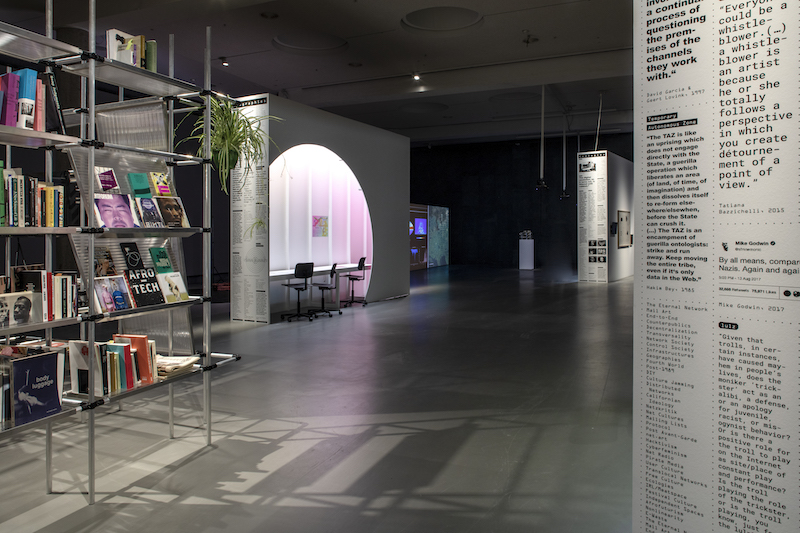
‘The Eternal Network,’ installation view, 2020 // Photo by Luca Girardini
Historically, the exhibition refers us to the mid-1960s, when the Fluxus artist Robert Filliou coined the term “Eternal Network.” The term, then, referred to social interactions taking place through mail art. Mail art of the 1960s challenged the existing political divide of the world, between West and the East. According to Tomáš Pospiszyl, East and West Fluxus artists “found a common vocabulary almost immediately…the constraints imposed by physical distance and political circumstance only seemed to strengthen their ties.” Art historian Klara Kemp-Welch refers to these experimental art practices in Eastern Europe during communism as “networking the Bloc.” And this designation is very precise when we think of mail art works reaching distant places behind the Iron Curtain and sharing their art with other like-minded artists.
These historical links are presented in the exhibition primarily as a list of terms, illustrated with quotations and visuals on the white walls throughout the exhibition space. This overflow of information mimics the digital world in the era of information. This curatorial decision establishes the exhibition’s focus from the outset, which is clearly on contemporary technology, digital and multimedia art rather than visual art. For better or worse, then, the focus is on contemporary artworks that reflect on the power and politics of online spaces, climate crisis, colonial power relations or the hybridization of the human and nonhuman.
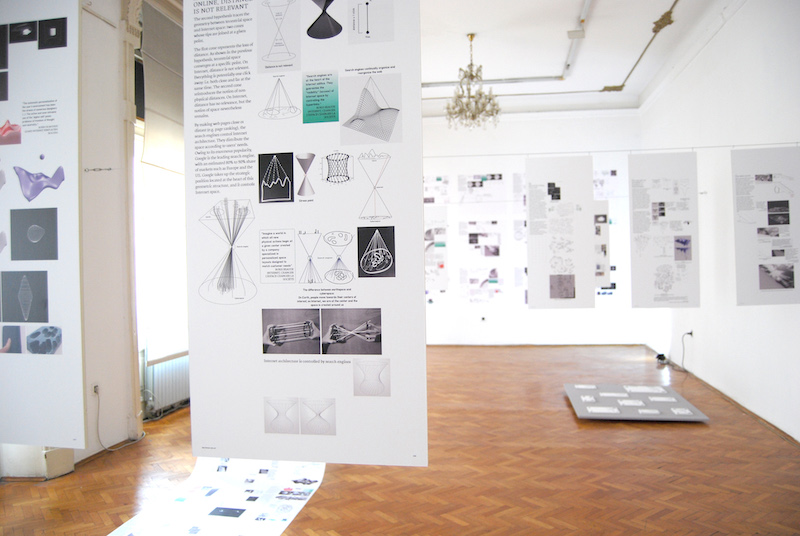
Louise Drulhe: ‘Critical Atlas of the Internet’ // Photo by the artist, Drugo More
The works presented are, however, quite diverse. There are some video installations, such as Johanna Bruchner’s work ‘Molecular Sex,’ in which the artist uses interspecies hybridization as her starting point for “the indeterminacy and queerness of being.” Austrian-born Bruchner depicts the connection between humans, animals, technology, sex and atmosphere in her video installation. This work reflects on Donna Haraway’s cyborg: “…a cybernetic organism, a hybrid of machine and organism, a creature of social reality as well as a creature of fiction.” Bruchner imagines a fictitious sex bot as her main character, evoking “plastic as a chemical substance impacting biological life, as well as nanotechnological beings that distort lovemaking and gender.”
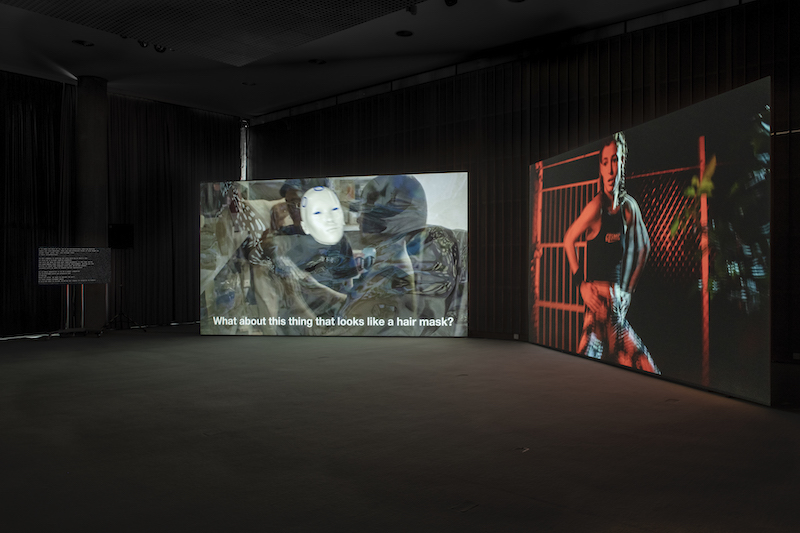
Johanna Bruckner: Molecular Sex, Installation View The Eternal Network, 2020 // Photo by Luca Girardini
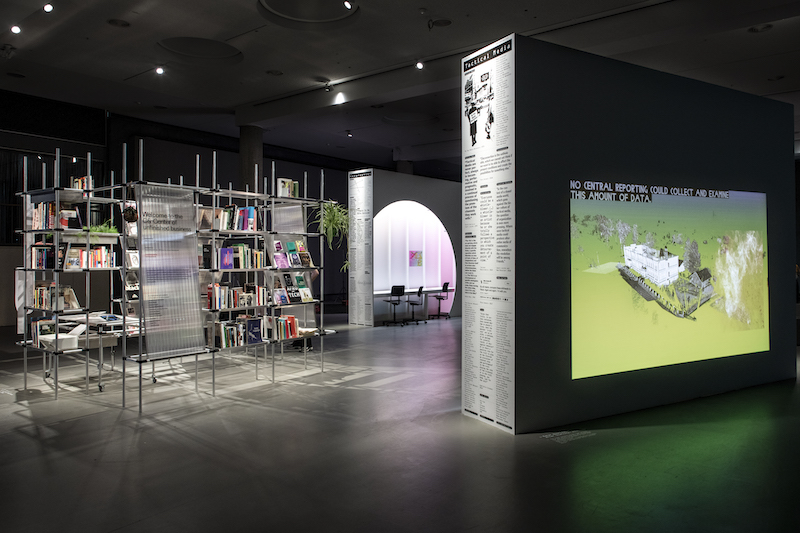
‘C& Center of Unfinished Business,’ since 2016, Bookcase, Installation View ‘The Eternal Network,’ 2020 // Photo by Luca Girardini
While some works are highly technological and scientific, others have a very tangible character. The installation ‘C& Center of Unfinished Business.’ This work by Contemporary And (C&)—an art magazine and dynamic space for contemporary art from Africa and its global diaspora—is presented in the form of a walk-in bookcase. The intricately curated bookcase offers the viewers the possibility to reflect on colonial power relations still affecting cultural networks today.
Other works presented as art installations are documentations of longer durational processes happening prior to the exhibition, such as ‘no bodies welcome I all bodies welcome.’ The work is the result of a collaboration between multidisciplinary artist Aay Liparoto and HOT BODIES – CHOIR, a queer, LGBTQIA+ and feminist choir based in Brussels. The work has two parts: one is the circular, free-standing holder for the bright pink booklets ‘Not Found On,’ which are result of Liparoto’s research on how feminist queer bodies share knowledge online. The second part is an igloo-like white installation that welcomes visitors to walk in and listen to the recording of Hot Bodies – Choir singing. The singing opens up a reflection on the power and politics of online spaces.
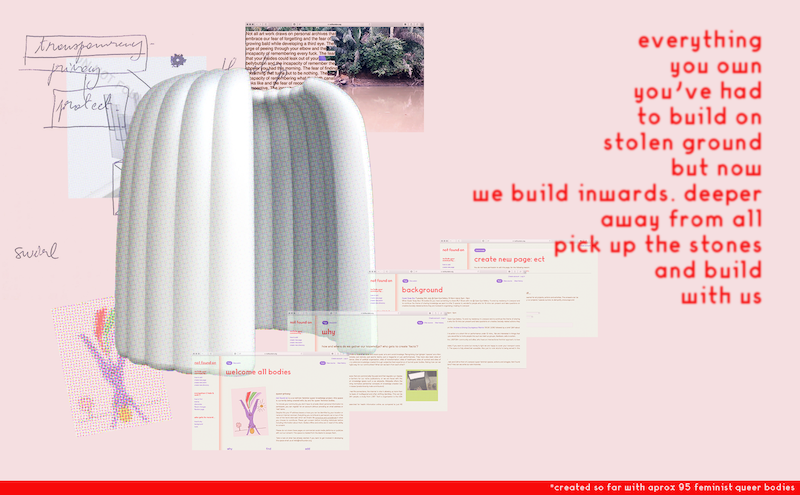
Aay Liparoto: ‘no bodies welcome I all bodies welcome’, 2019 // Courtesy of the artist.
In this sense, the works in the exhibition differ greatly, as do their understandings of the term “network.” Overall, the exhibition raises many urgent topics we are currently facing globally, regarding environmental crisis, the fate of democracy and the nature of post-colonial power relations. The presented artworks are engaging, interactive and discursive. They often raise more questions, rather than proposing solutions. Many works on view, however, engage in very scientific and technological language, which is not always easily accessible. We belong to a greater social body, as Eula Biss suggests, where we are in relationships of dependence with others. The exhibition therefore opens up questions on how we can connect in a meaningful way. How do we act collectively in response to pressing global issues such as ecology, democracy and freedom of information? Perhaps the questions raised in ‘The Eternal Network’ are a necessary push towards initiating technological solutions for the future.
Exhibition Info
TRANSMEDIALE
Group Show: ‘The Eternal Network’
Exhibition: Jan. 29 – Mar. 01, 2020
HKW, John-Foster-Dulles-Allee 10, 10557 Berlin, click here for map






















